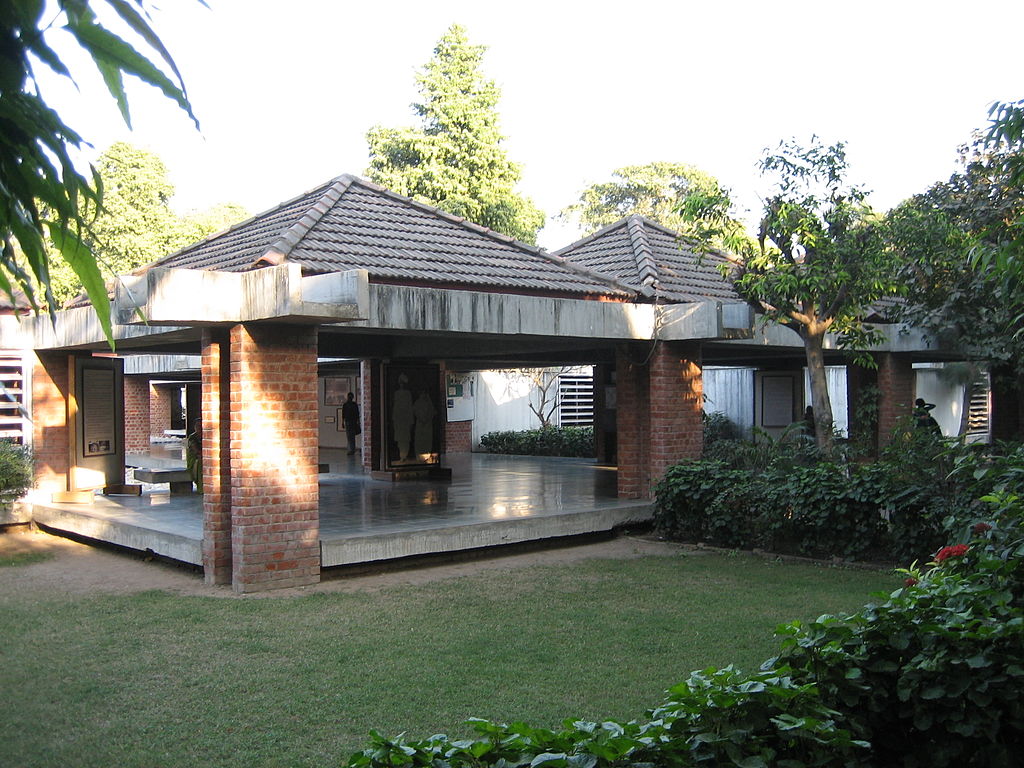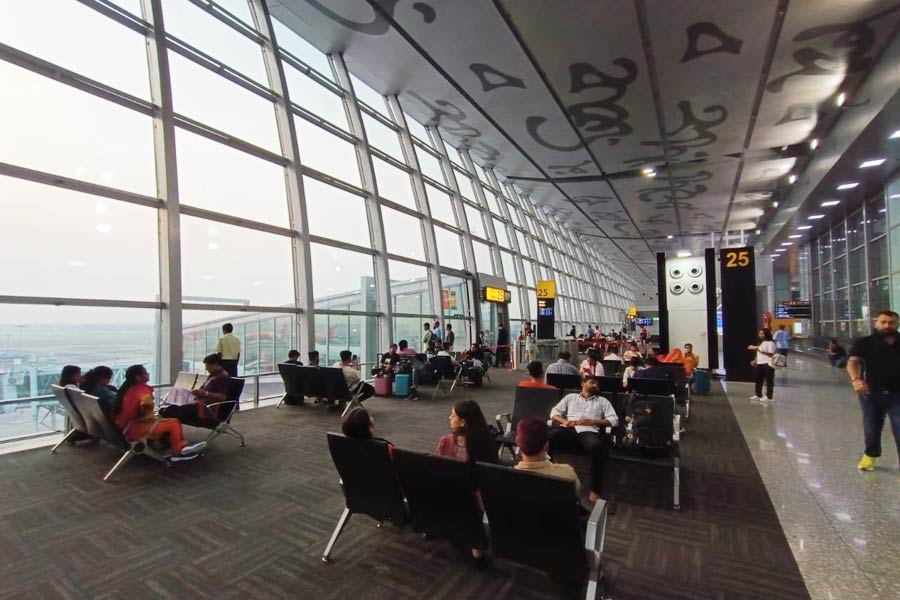The Sidi Saiyyed Mosque — jaaliwali masjid to the aam Amdavaadi — is one of Ahmedabad’s many attractions. Visitors to the city may not be aware that the equally ornate mansion — a Baroque beauty — opposite the mosque is as historic. The mansion — it is now a plush hotel — was built in 1904 by Sheth Mangaldas Girdhardas, a textile tycoon, and M.K. Gandhi is said to have stayed in it after his return from South Africa. Mangaldas was one of Gandhi’s early patrons; he helped Gandhi set up his first ashram — this was in Kochrab, not Sabarmati — and even provided spinning yarn at a concessional rate. Mangaldas was one of the several members of Ahmedabad’s influential mercantile community that wished Gandhi well. Chinubhai Baronet, the grandson of Ahmedabad’s first mill owner, had presided over the maiden public function to felicitate Gandhi; Ambalal Sarabhai’s timely donation helped Gandhi sustain the Kochrab ashram after funds ran dry because of Gandhi’s decision to accommodate a family of untouchables; Leila Purshottam Hutheesing, the matriarch of a business clan, helped temper the report of the Hunter Commission that investigated Gandhi’s role in disturbances in the city after Jallianwala Bagh.
The support for Gandhi from Ahmedabad’s mahajans — a unique set of entrepreneurs and philanthropists — could appear baffling. This is because Gandhi often worked for causes that went against the interests of textile barons. With Gandhi as mentor, the remarkable Anasuya Sarabhai, Ambalal’s elder sister, had organized the first-ever labour strike against mill owners, demanding fair wages.
The difference between Gandhi and the merchants stemmed from the Mahatma’s interpretation of wealth, ownership and distribution. This ‘conflict’ is best expressed through Gandhi’s notion of ‘Trusteeship’. Gandhi expounded this principle in Harijan (03.06.1939) thus: “I have come by a fair amount of wealth… I must know that all that wealth does not belong to me; what belongs to me is the right to an honourable livelihood… The rest of my wealth belongs to the community and must be used for the welfare of the community...” In spite of Gandhi’s opposition to the tenets of capitalism, he did not vilify capitalists. “I am not ashamed to own that many capitalists are friendly towards me... They know that I desire to end capitalism... as much as the most advanced Socialist or even Communist. But our methods differ, our languages differ...” (Harijan, 16.12.1939). But Gandhi had not allowed philosophy to cloud politics. He had recognized early in his career capital’s potential benefits for the freedom project. In fact, Gandhi’s decision to base himself in Ahmedabad — Rabindranath Tagore had offered him land to set up an ashram near Santiniketan — was premised upon his scheme to utilize capital for his experiments while renouncing it morally at the same time. In his autobiography, Gandhi explained his choice of Ahmedabad: “I had a predilection for Ahmedabad... There was... the hope that, the city being the capital of Gujarat, monetary help from its wealthy citizens would be more available here than elsewhere.” Could the utilitarian element in the saint’s relationship with the city be any more discernible?
The city, too, has not been entirely selfless when it comes to its saint. Within the Mahatma’s lifetime, there were signs that Ahmedabad’s merchants, who had stood by him initially, would not mind jettisoning Gandhi’s economic vision. One possible explanation for their disenchantment could have been their inability to distinguish between the Gandhian notion of authority and ownership. That ownership of wealth and other resources needed to be truly representative may have been difficult to fathom for an entrepreneurial community that was used to exercising its authority unilaterally. There was another seduction, that of Nehruvian modernism. By 1937, 11 years before Gandhi’s assassination, both Ambalal and Kasturbhai Lalbhai had joined the Congress’s National Planning Committee, which advocated State interventions in the economy. This was, yet again, in contravention of Gandhi’s conception of the role of the State. In The Modern Review of October 1935, Gandhi argued that even though State ownership was preferable to private ownership, it was “objectionable” since “The State represents violence in a concentrated and organized form.” By the early 1970s, Ahmedabad’s textile sector was afflicted with deindustrialization and the city shifted its allegiance and investments towards other industries. Another sinister indicator of Ahmedabad falling foul of Gandhi, his ideals, and institutions, came in the form of the riots of 1969, a cataclysmic event that set the template for future conflagrations, including the one in 2002.
What is singular about modern Ahmedabad is the nonchalance with which it marginalizes and fetishizes Gandhi simultaneously. A stroll among the pols in the old city — several heritage walks have become popular after Ahmedabad was accorded Unesco’s benefaction — would reveal that Gandhi’s concern with sanitation — cleanliness was central to the precept of swaraj — remains relevant. (In September 1919, Navajivan started publishing a month-long series on cleanliness.) Other pollutions that the Mahatma fought against are as explicit. The city space is distinctly segregated, with the Muslim population pushed, through periodic lawlessness and law — the controversial Disturbed Areas Act is an example — towards the margins. One such area of concentration is called Bapunagar. Ahmedabad’s mills — forlorn reminders of the wealth that nourished the Mahatma’s socio-political projects — are being preyed upon by real estate and encroachment. Yet, it is impossible to ignore the life-sized doll of the Mahatma spinning inside the airport; Gandhi’s slogans are splashed on walls; the Sabarmati ashram is included in travel itineraries; hotels, such as the one adjacent to Sidi Saiyyed Mosque, seldom hesitate to remind guests of their association with Gandhi.
What surprises the city, occasionally, is the saint’s resilience. Reminiscing about that cold, momentous night at the Maritzburg railway station in South Africa after he had been forced off a train because of the colour of his skin, Gandhi writes: “I began to think of my duty. Should I fight for my rights or go back to India?” Gandhi had taken the next train to Pretoria. Some of his followers in Ahmedabad remain as resolute. One Gandhian — he used to live next to Sabarmati — had been steadfast in his campaign for land rights well into his nineties; another krantikari — he resides in the suburbs — has vowed not to wear a shirt till the predatory State stops gobbling up agricultural land; then, there are the nameless ashramites quietly disseminating the Gandhian way of life to a dwindling audience.
In Ahmedabad, the city that witnessed Gandhi’s transformation into the Mahatma, Gandhi is a man in and, more often than not, out of time. Gandhi’s belittlement in the public consciousness has led to the Gandhian legacy being compared to a fraying moral compass, even though one would think that New India’s insensitivity towards pluralism, secularism, environment, sanitation, labour, migrants, among other issues, reiterates Gandhi’s relevance, not redundancy.
This compass is a curious instrument: erosion has not turned it benign. For the compass, much like human conscience, accurately measures the distance that India has travelled from — not towards — the ideals cherished by that peerless mind.
The echoes of this growing chasm can resonate in unexpected ways. Among Sabarmati’s treasures are a museum, a gallery, and a well-stocked library, archive and book shop. There is, however, another gem: slim volumes in which visitors have, over the years, penned their thoughts in a number of languages. Most of the entries are mundane: students parroting their admiration for Gandhi; a couple complimenting the idyllic setting; a smug note from a dignitary. But there are other, rarer, reflections. Such as those of an aged, retired lawyer — a midnight’s child — who had travelled all the way from Telangana to seek forgiveness from Gandhi for the nation’s betrayal of the Mahatma.










